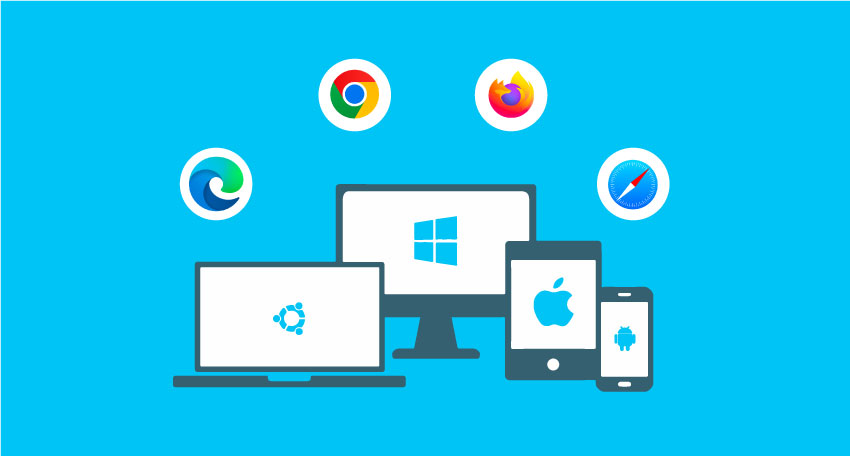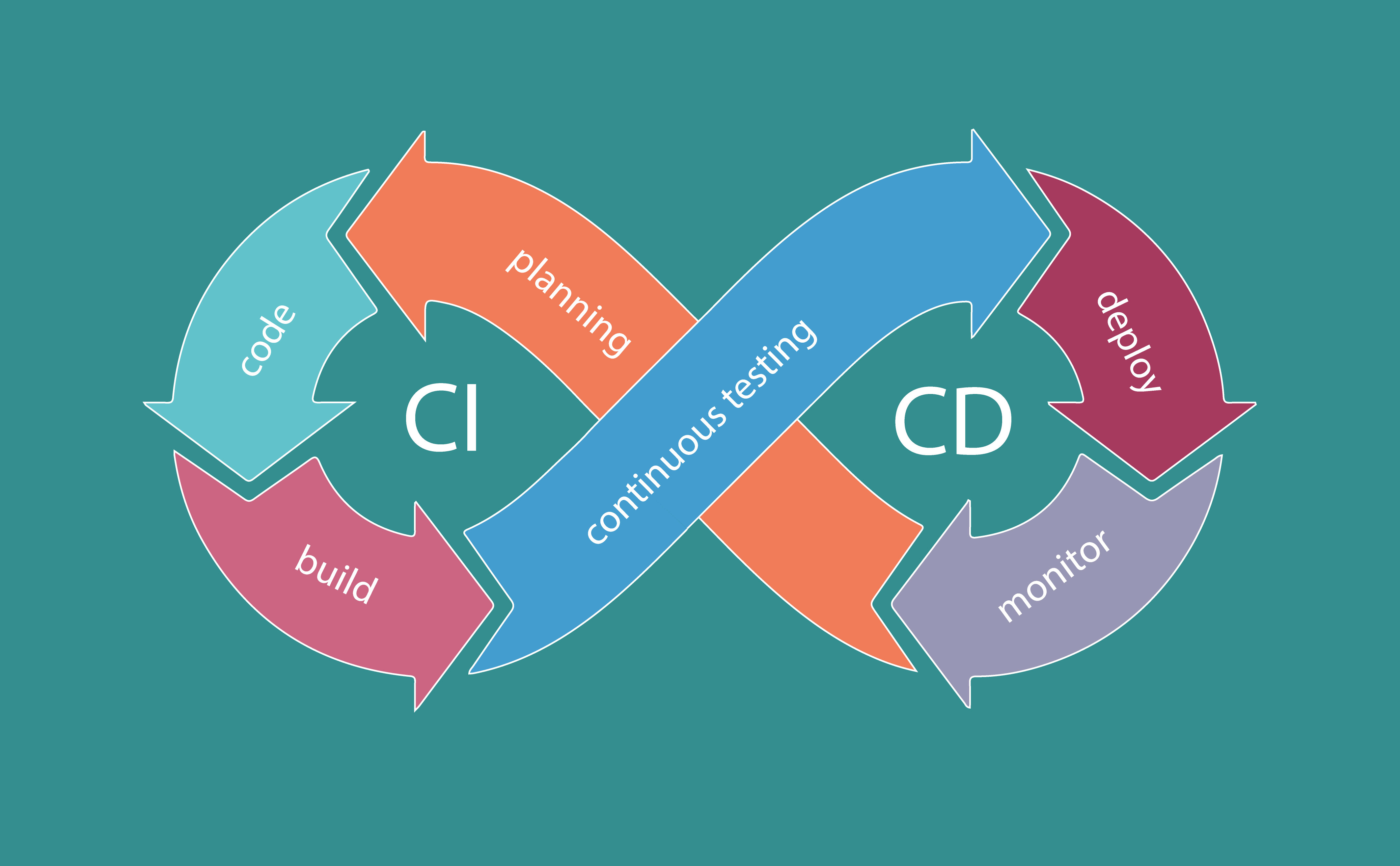CROSS BROWSER TESTING
Browsers today have become much more consistent in how they render web applications. The days where developers had to almost to double the amount of work, thanks to the sometimes contradicting behaviour between web browsers, is a thing of the past. However, still different devices and different browsers versions can cause your app not work consistently well or not work in certain parts at all for some users.
Web developers must ensure that their application work well for all user that access the app. This is where cross browser testing comes into play.

What is Cross Browsing Testing?
Safe to say that the name kind of gives it away. Cross browser testing is the testing of websites or web applications that takes place across various browsers to ensure the behaviour and functionality works as intended.
Cross browser testing is more then simply opening up a website or web application in different browsers. This testing includes validating the functionality with the devices and operating systems and verifying how a website or application work under different scenarios that a user can come across in the real world.
Different version of a browser, device or operating system can expose inconsistencies in your app. Some issues are very small inconveniences, like a misaligned text field, styling seems different, but also, some issues can make your app unusable, like a JavaScript error that prevents the site from loading altogether.
It’s impossible to test every possible combination of browser, operating system, device and scenario, it’s still worth the time to validate your web app across the most commonly used web browsers and devices like PCs and smartphones.
How to perform Cross Browsing Testing?
As with most testing strategies, most business handle cross browser testing in two ways: with manual testing and automated tests.
Can Cross Browsing Testing Be Done Manually?
The short answer to this is yes. Organisations can have a few members of a QA team load up their web applications on different operating systems and browsers. They go through various test scenarios to verify that the app works as intended no matter where or under which conditions it’s accessed. Some teams follow a script or have a series of test cases that they go through, while others do more exploratory testing without a set plan.
Keeping in mind that manual testing only keeps high level of quality for your web applications. As with all manual testing, it can take a lot of time to complete and can be prone to human error. Plus, no one wants to perform the same mundane, repetitive tasks over and over every single day. After a while, this work takes a mental toll on testers, leading to bugs slipping through the cracks.
Automate Cross Browsing Testing.
With automated testing, teams can eliminate the boring parts of manual testing. By using tools that automatically go through the same scenarios, automated cross browser testing bypasses the repetitious work of manual testing and free up QA to perform other kinds of high-value work to get the most out of your team’s testing time.
The downside of automated testing is that the scripts can only reveal issues in their area of coverage. If your web application doesn’t have any automated tests going through certain parts of the application, bugs can remain uncovered in those sections until someone stumbles upon them.
Automated tests also usually do only what they’re told, eliminating the benefits of exploratory testing that a human tester brings to the table.
The Best Approach Is Both.
Some teams prefer going all in either manual or automated testing but the ideal approach is a mix of both. Start with manual, like mentioned above exploratory testing to determine the sections with high risk and importance to the business - the areas where your organisation stands to lose customers or money if they stop working.
With a list of test scenarios to guide you, begin sprinkling in automated tests to handle the most critical and tedious test cases. This balanced plan will give you the best of both worlds.
Ways To Build a Cross Browser Test Suite.
Testers have a lot options for creating cross browser test suites.
Documenting scenarios can help QA establish the various test cases needed for manual testing purposes and which browsers to target. The documentation can be as formal as a test plan defined at the start of a new project or as informal as a shared spreadsheet that anyone can modify.
For teams going the automated route, software developers and QA engineers can code a fully functional cross browser test suite, provided the team has the technical ability to do this.
Teams with limited programming knowledge aren’t left behind when it comes to automating tests. A growing segment of the QA world is the rise of low-code or codeless testing tools. These tools allow anyone to easily create automated tests without any coding experience, like recording the steps taken in a web application and replaying it in the future.
Top 5 Cross Browser Testing Tools
These days, there’s no shortage of excellent tools to get started with cross browser testing. Just to list a few great choices if you’re looking to get started on a low-code/codeless testing environment:
TestCafe Studio
My personal favourite, TestCafe Studio by DevExpress is a cross platform tool powered by TestCafe, an open-source framework focused on end-to-end testing for web applications. It supports most major browsers, including browsers for mobile devices, with almost no configuration required.
Test Studio
Test Studio by Telerik is a Windows-based testing application covering desktop and web applications. It provides a full suite of tools with different kinds of automated testing, including web application test recording, cross browser testing and automating test.
Ghost Inspector
Ghost Inspector is an online service that captures recorded actions and assertions of a web application through a browser extension, which it then executes on its servers. One issue with this is, the service is currently, available only for Chrome and Firefox.
Selenium IDE
Selenium IDE is a recording and playback tool based on the widely used Selenium testing framework. Like Ghost Inspector, Selenium IDE works as a browser extension for Chrome or Firefox and provides a ready-to-use IDE to test your web application.
Katalon Studio
Katalon Studio is a cross platform testing tool that uses Selenium under the hood for executing web application tests. Out of the box, it supports test recording functionality across most major browsers.
Should Cross Browser Tests Always Be Recorded?
A lot of organisations have concerns about whether they should rely on low-code/codeless testing tools to record their cross browser tests or if they should code them from the ground up. Both options work well, depending on your team and business needs.
As mentioned earlier, teams with fewer technical resources on hand can get started quickly with a low-code or codeless solution. The benefit of this strategy is that anyone can fire up the web browser and record a helpful test that the tool can replay to ensure the application behaves as expected.
Keeping in mind that your web application and cross browser test suite will expand, these tools might start to show signs of growing pains. Depending on the low-code/codeless service used, you might start to get limited as to what the tool can do. For instance, it may become challenging to reuse components or handle complex UIs or find specific selectors on a page. In those cases, coding will often improve the testing experience by allowing testers to refactor and organise test cases in more efficient ways then low-code/codeless testing tools will be able to do.
With that said, it doesn’t mean that low-code and codeless tools will always hit these kinds of limitations. Most modern low-code/codeless testing tools allow editing the tests in different ways, letting testers record their tests and access the underlying code for any necessary modifications. When seeking a low-code or codeless testing tool, the ability to switch between both modes effortlessly should be a key factor to guide your decision.
Regardless of the tool of choice, the most important thing is to have coverage of cross browser testing. It will make development easier by detecting issues quicker and making sure your customers have a smooth experience.



